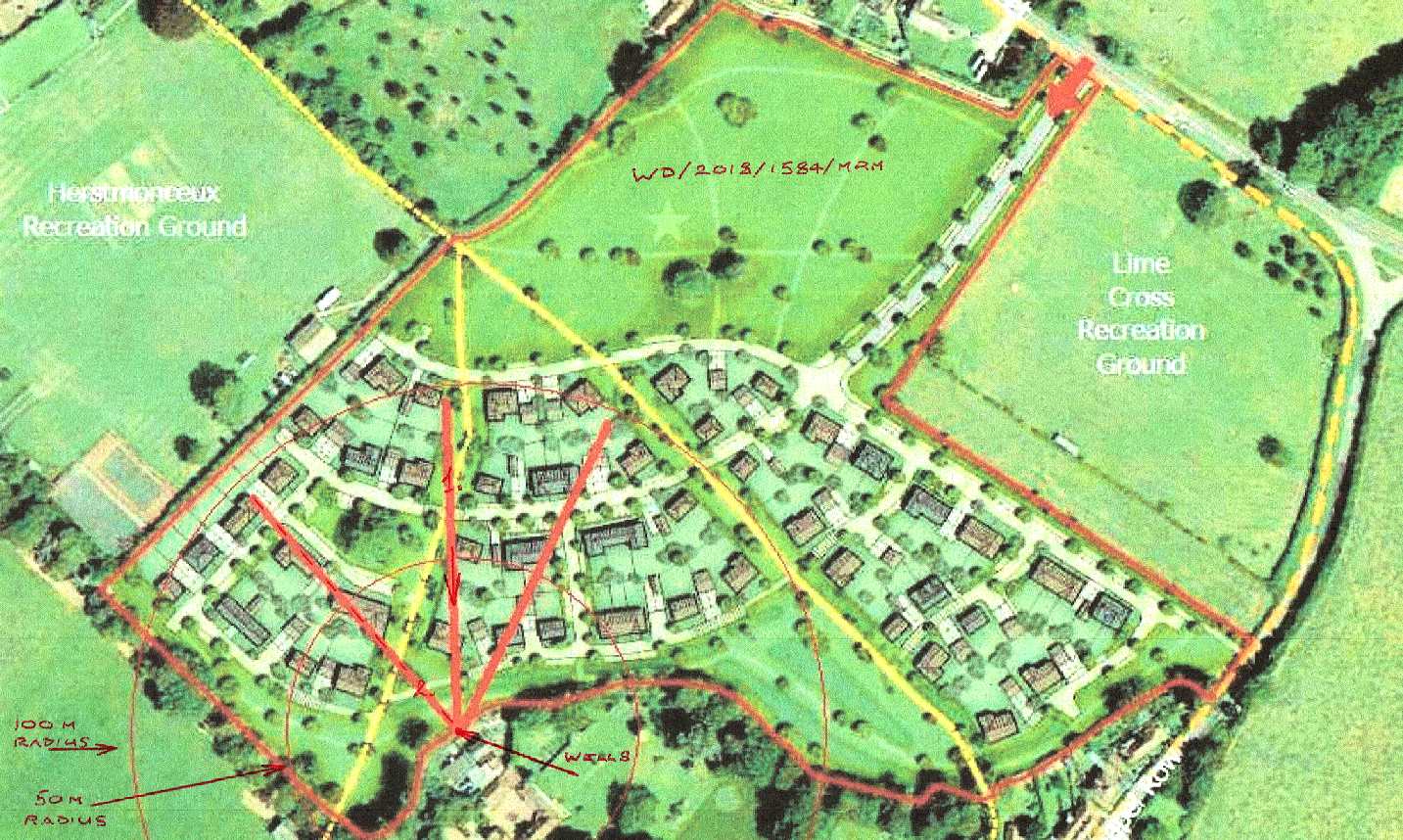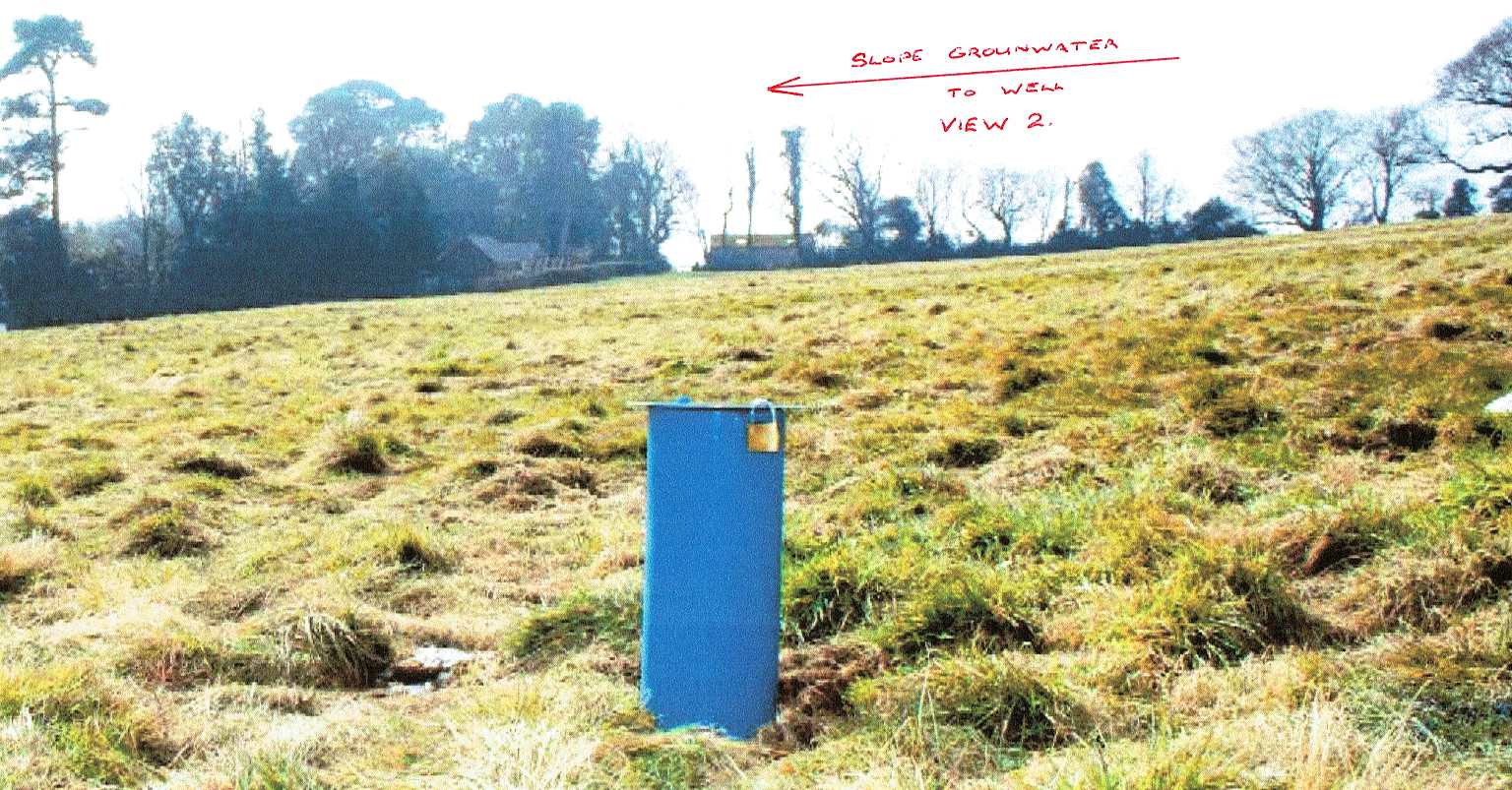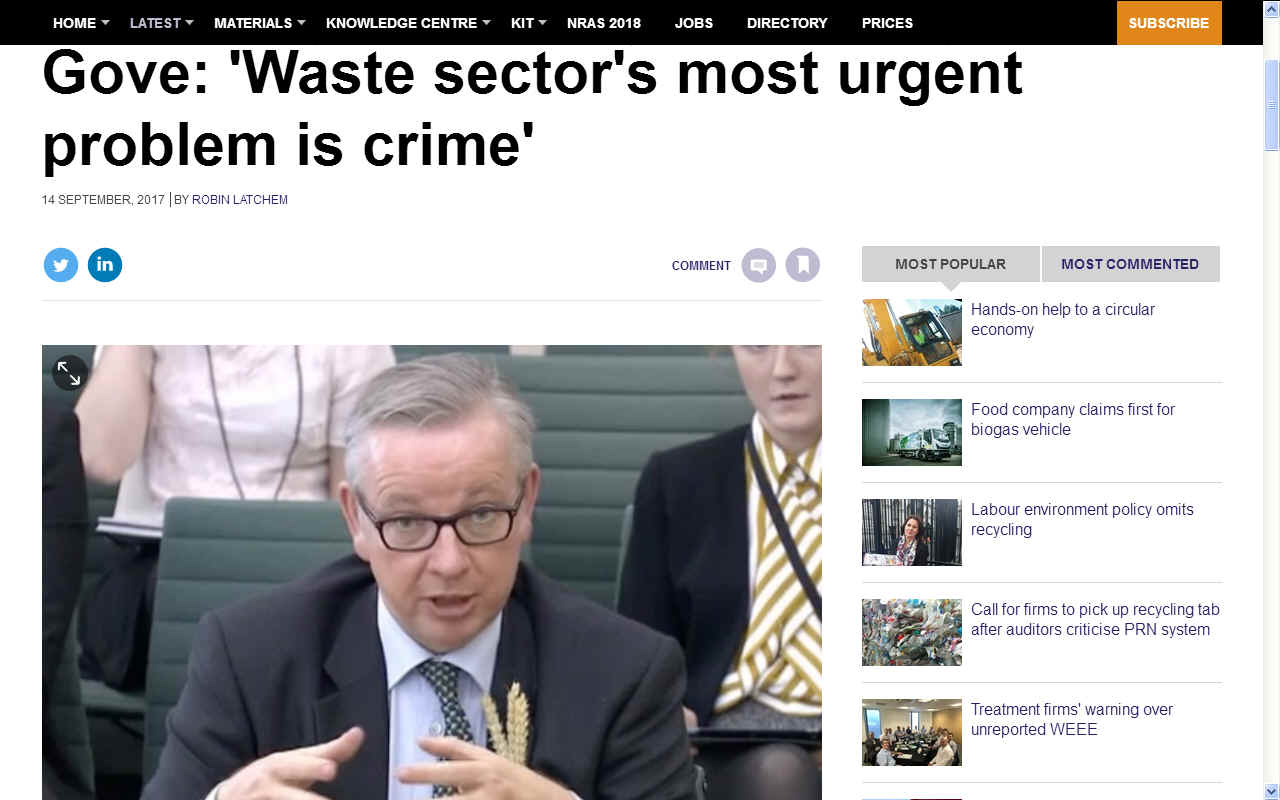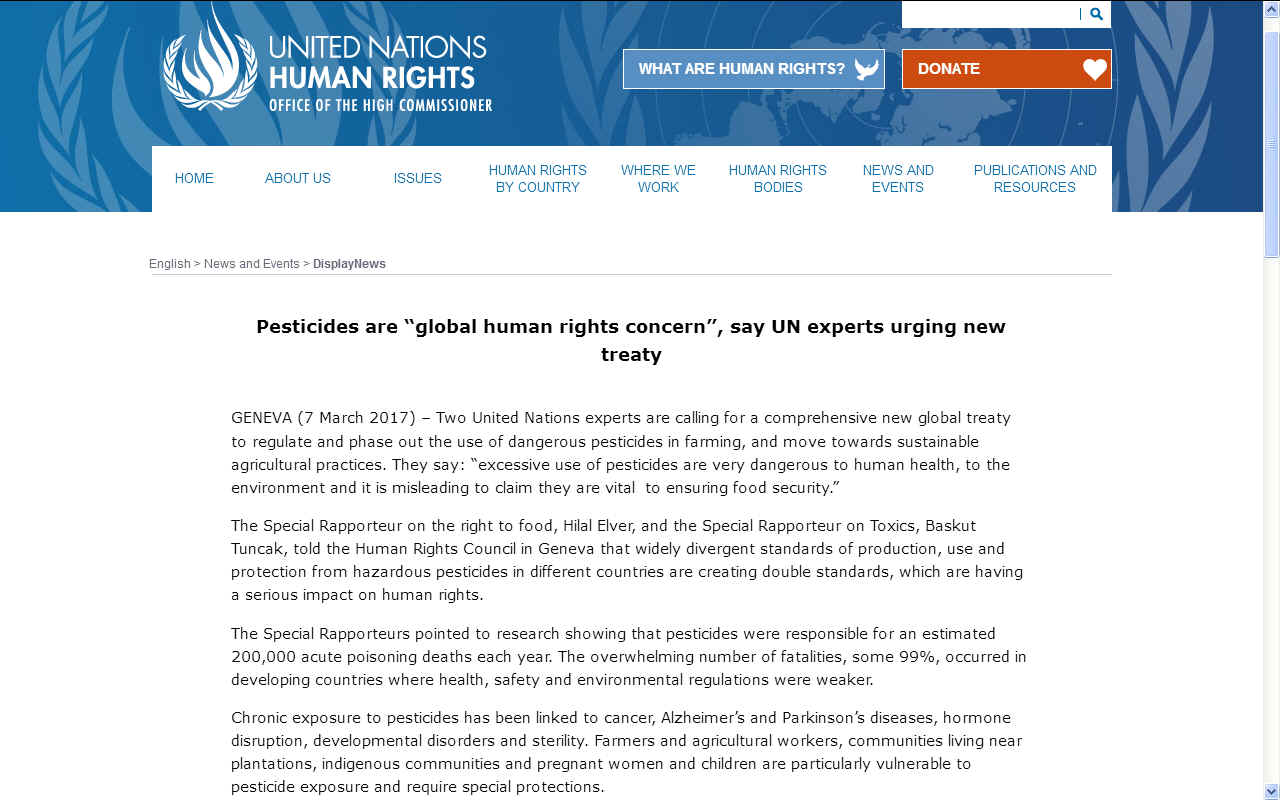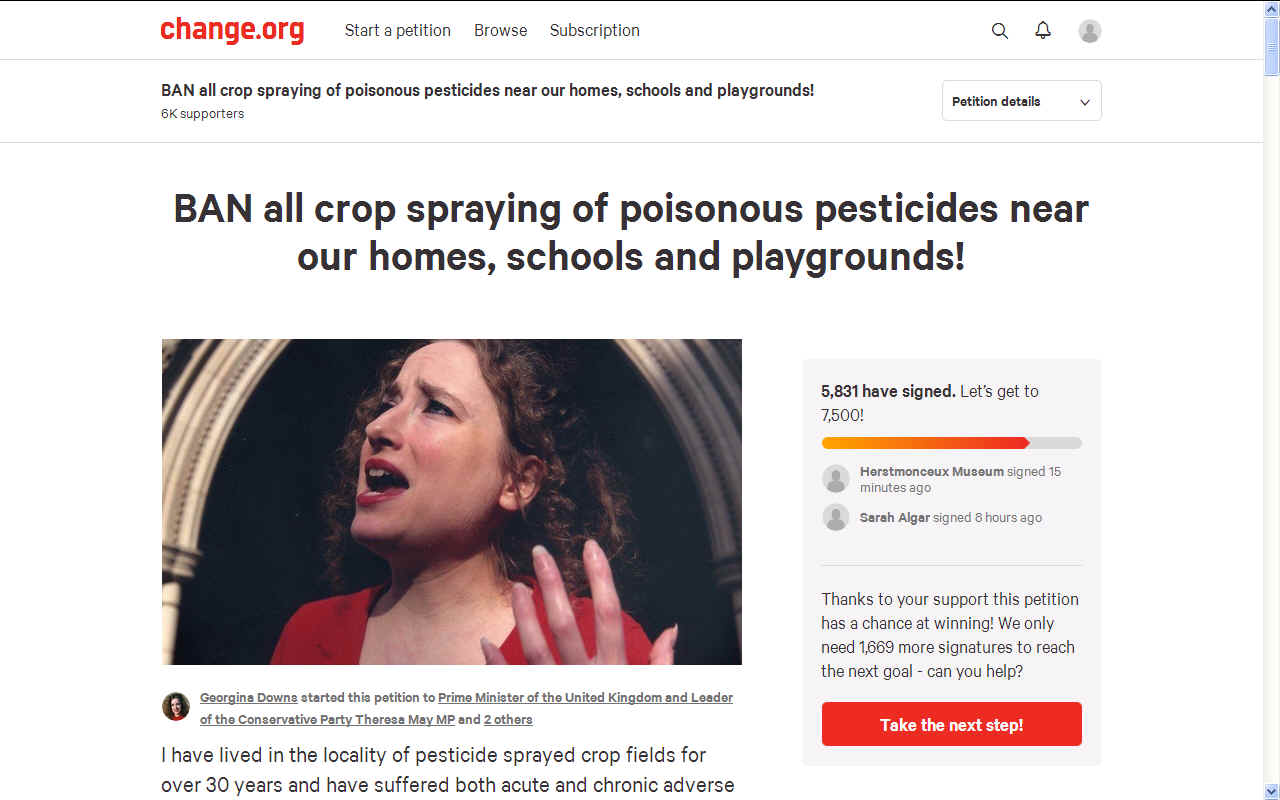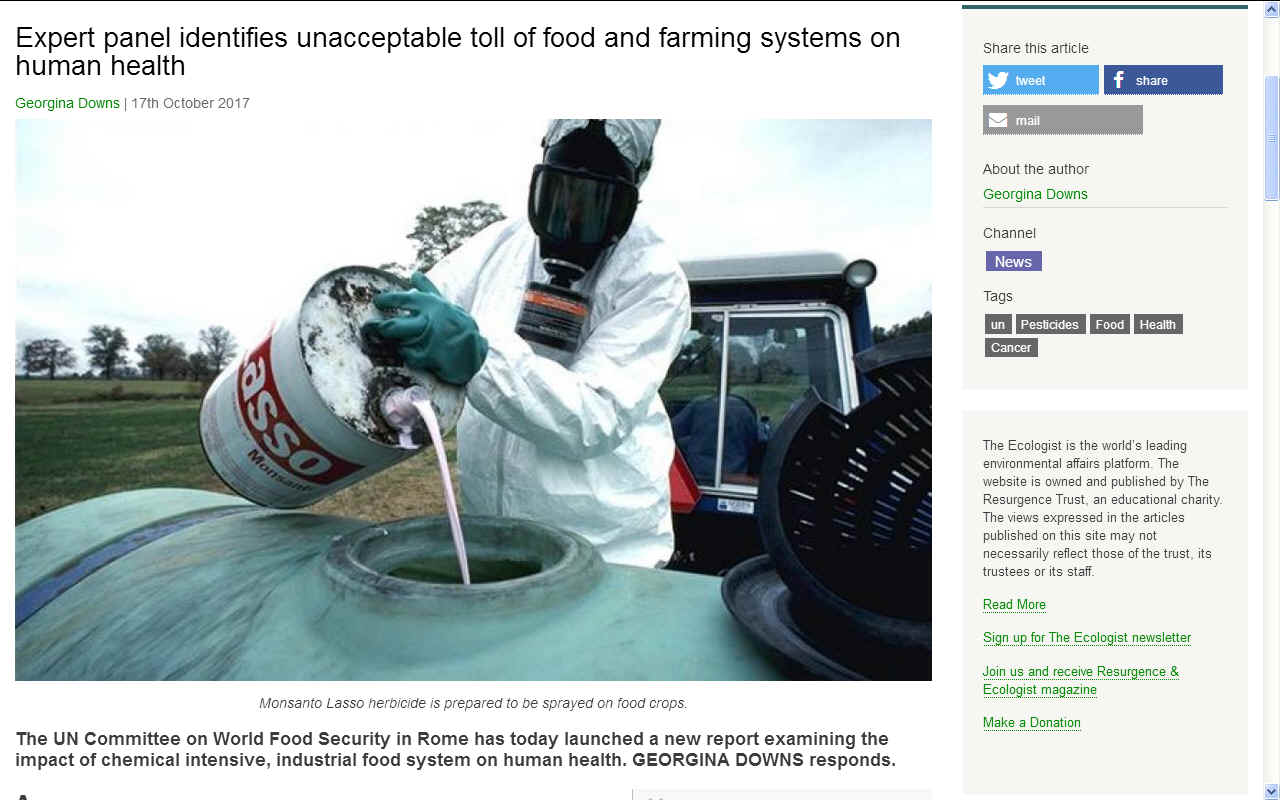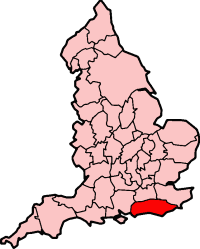|
PART 1
Water standards
Citation, application and commencement
1. These Regulations may be cited as the Private Water Supplies Regulations 2009; they apply in England and
come into force on 1st January 2010.
Scope
2. These Regulations apply in relation to private supplies of water intended for human
consumption; and for these purposes “water intended for human consumption”
means —
(a) all
water either in its original state or after treatment, intended for drinking, cooking, food
preparation or other domestic purposes, regardless of its origin and whether it is supplied
from a distribution network, from a tanker, or in bottles or containers;
(b) all water used in any food-production undertaking for the manufacture, processing,
preservation or marketing of products or substances intended for human consumption.
Exemptions
3. These Regulations do not apply in relation
to —
(a) water controlled by the Natural Mineral Water, Spring Water and Bottled Drinking Water
(England) Regulations 2007(a);
(b) water that is an authorised medicinal product; or
(c) water used solely for washing a crop after it has been harvested and that does not affect
the fitness for human consumption of the crop or of any food or drink derived from the crop.
Wholesomeness
4. Water is wholesome if all the following conditions are
met —
(a) it does not contain any micro-organism, parasite or substance, alone or in conjunction
with any other substance, at a concentration or value that would constitute a potential danger to human health;
(b) it complies with the concentrations or values specified in Part 1 of Schedule 1; and
(c) in the water:
|
nitrite (mg/l) |
|
nitrate (mg/l) |
|
|
__________ |
+ |
__________ |
≤ |
|
50 |
|
3 |
|
.
Use of products or substances in private supplies
5. Any product or substance used in a private supply after the coming into force of these
Regulations must be a product or substance that would be permitted to be used in a water supply
under regulation 31 of the Water Supply (Water Quality) Regulations 2000(b).
Requirement to carry out a risk assessment
6. — (1) A local authority must carry out a risk assessment within five years of the coming into
force of these Regulations, and subsequently every five years (or earlier if it considers that the
existing risk assessment is inadequate) of each private supply that supplies water to any premises
(other than a supply to a single dwelling not used for any commercial activity).
(2) The risk assessment is to establish whether there is a significant risk of supplying water that
would constitute a potential danger to human
health.
(3) It must also carry out a risk assessment of a private supply to a single dwelling not used for
any commercial activity if requested to do so by the owner or occupier of that dwelling.
PART 2
Monitoring
7. The local authority must monitor all private supplies in accordance with this Part when
carrying out its duties under section 77(1) of the Water Industry Act 1991.
Further distribution of supplies from water undertakers or licensed water suppliers
8. Where water is supplied by a water undertaker or licensed water supplier and is then further
distributed by a person other than a water undertaker or licensed water supplier the monitoring
must be carried out on the basis of the risk assessment.
Large supplies and supplies to commercial or public premises
9. In the case of a private supply (other than that specified in regulation 8)
that —
(a) supplies an average daily volume of water of 10m3 or more, or
(b) supplies water to premises where the water is used for a commercial activity or to public
premises, the local authority must monitor in accordance with Schedule 2 and carry out any additional
monitoring that the risk assessment shows to be necessary.
Other private supplies
10.—(1) In any other case other than a private supply to a single dwelling not used for a
commercial activity, the local authority must monitor for —
(a) conductivity;
(b) enterococci;
(c) Escherichia coli (E. coli);
(d) hydrogen ion concentration;
(e) turbidity;
(f) any parameter in Schedule 1 identified in the risk assessment as being at risk of not
complying with the concentrations or values in that Schedule; and
(g) anything else identified in the risk assessment as a potential danger to human health.
(2) It must monitor at least every five years and more frequently if the risk assessment shows
that this is necessary.
(3) In the case of a private supply to a single dwelling not used for a commercial activity a local
authority may monitor the supply in accordance with this regulation, and must do so if requested
to do so by the owner or occupier.
Sampling and analysis
11.—(1) When a local authority monitors a private supply it must take a
sample —
(a) if the water is supplied for domestic purposes, from a tap normally used to supply water
for human consumption, and which, if there is more than one tap, is representative of the
water supplied to the premises;
(b) if the water is used in a food-production undertaking, at the point at which it is used in the
undertaking;
(c) if the water is supplied from a tanker, at the point at which it emerges from the tanker;
(d) in any other case at a suitable point.
(2) It must then ensure that the sample is
analysed.
(3) Schedule 3 makes further provision for sampling and analysis.
Maintenance of records
12. A local authority must make and keep records in respect of every private supply in its area in
accordance with Schedule 4.
Notification of information
13. By 30th June 2010, and by 31st January each following year, every local authority must send
the Secretary of State a copy of the records in Schedule 4.
PART 3
Action in the event of failure
Provision of information
14. If the local authority considers that a private supply in its area is a potential danger to human health it must take appropriate steps to ensure that people likely to consume water from
it —
(a) are informed that the supply constitutes a potential danger to human health;
(b) where possible, are informed of the degree of the potential danger; and
(c) are given advice to allow them to minimise any such potential danger.
Investigation
15. A local authority must carry out an investigation to establish the cause if it suspects that the supply is
unwholesome or that an indicator parameter does not comply with the concentrations or
values in Part 2 of Schedule 1.
Procedure following investigation
16. (1) Once a local authority has carried out an investigation and established the cause of the water being
unwholesome, it must act in accordance with this regulation.
(2) If the cause of the unwholesome water is in the pipework within a single dwelling, it must promptly inform the people concerned and offer them advice on measures necessary for the protection of human health.
(3) Otherwise, if it cannot solve the problem informally the local authority —
(a) may on application grant an authorisation in accordance with regulation 17(2) if the conditions in that
regulation are fulfilled; and
(b) if it does not grant such an authorisation, must (or, in the case of a supply to a single dwelling, may) serve a notice, either in accordance with section 80 of the Water Industry Act 1991 or under regulation 18 if the conditions in that regulation are fulfilled.
Authorisations of different standards
17. (1) Any person may apply to a local authority for the grant of an authorisation under this regulation.
(2) A local authority may grant an authorisation of different standards under this regulation
if —
(a) the only cause of the unwholesome water is that a parameter in Table B of Part 1 of
Schedule 1 (chemical parameters) is not complied with;
(b) the local authority has consulted all water users who will be affected by the authorisation
and the Health Protection Agency for the area and has taken their views into account;
(c) granting the authorisation does not cause a potential danger to human health;
(d) the supply of water cannot be maintained by any other reasonable
means.
(3) An authorisation must require the applicant to take action over a period of time to ensure that
the necessary parameters are complied with, and must specify—
(a) the person to whom the authorisation is granted;
(b) the supply concerned;
(c) the grounds for granting the authorisation;
(d) the parameters concerned, previous relevant monitoring results, and the maximum
permissible values under the authorisation;
(e) the geographical area, the estimated quantity of water supplied each day, the number of
persons concerned and whether or not any food-production undertaking is affected;
(f) an appropriate monitoring scheme, with an increased monitoring frequency where
necessary;
(g) a summary of the plan for the necessary remedial action, including a timetable for the
work and an estimate of the cost and provisions for reviewing progress;
(h) the duration of the authorisation.
(4) If a local authority grants an authorisation, and the person to whom it is granted takes action
in accordance with the timetable specified in the authorisation, the local authority may not serve a
notice under section 80 of the Water Industry Act 1991 concerning the matters specified in the
authorisation without first amending or revoking the authorisation.
(5) The duration of the authorisation must be as short as possible and in any event may not
exceed three years.
(6) The local authority must ensure that people concerned are promptly informed of the
authorisation and its conditions and, where necessary, ensure that advice is given to particular
groups for which the authorisation could present a special risk.
(7) If the supply exceeds 1,000 m³ a day as an average or serves more than 5,000 persons the
local authority must send a copy of the authorisation to the Secretary of State within one month.
(8) The local authority must keep the progress of the remedial action under review.
(9) If necessary, it may grant a second authorisation for up to a further three years with the prior
consent of the Secretary of State, but if it does so it must, as soon as is reasonably practicable,
send a copy of the authorisation together with the grounds for its decision to the Secretary of State.
(10) It may revoke or amend the authorisation at any time, and in particular may revoke or
amend it if the timetable for remedial action has not been adhered to.
PART 4
Notice procedure
Notices
18.—(1) If any private supply of water intended for human consumption constitutes a potential
danger to human health, a local authority acting under these Regulations must serve a notice under that section.
(2) The notice must —
(a) identify the private supply to which it relates;
(b) state the grounds for serving the notice;
(c) prohibit or restrict the use of that supply;
(d) specify what other action is necessary to protect human health.
(3) The local authority must promptly inform consumers of the supply of the notice and provide
any necessary advice.
(4) The notice may be subject to conditions and may be amended by further notice at any time.
(5) The local authority must revoke the notice as soon as there is no longer a potential danger to
human health.
(6) It is an offence to breach a notice served under this regulation or fail to comply with it.
Appeals
19.—(1) Any person who is aggrieved by a notice served under regulation 18 may appeal to a
magistrates’ court within 28 days of service of the notice.
(2) The procedure on an appeal to a magistrates’ court under paragraph (1) is by way of
complaint, and the Magistrates’ Courts Act 1980(a) applies to the proceedings.
(3) A notice remains in force unless suspended by the court.
(4) On an appeal, the court may either cancel the notice or confirm it, with or without
modification.
Penalties
20.—(1) A person failing to comply with a notice served under regulation 18 is
liable —
(a) on summary conviction, to a fine not exceeding the statutory maximum or to a term of
imprisonment not exceeding three months or both, or
(b) on conviction on indictment, to a fine or to imprisonment for a term not exceeding two
years or both.
(2) Where a body corporate is guilty of an offence under these Regulations, and that offence is
proved to have been committed with the consent or connivance of, or to have been attributable to
any neglect on the part of—
(a) any director, manager, secretary or other similar person of the body corporate; or
(b) any person who was purporting to act in any such capacity,
that person is guilty of the offence as well as the body corporate.
(3) For the purposes of paragraph (2) above, “director”, in relation to a body corporate whose
affairs are managed by its members, means a member of the body corporate.
PART 5
Miscellaneous
Fees
21. Schedule 5 makes provision for fees.
Revocation
22. The Private Water Supply Regulations 1991(a) are revoked in England.
SCHEDULE 1 Regulations 4, 10, 15 and 17
Concentrations or Values
PART 1
Wholesomeness
TABLE A: MICROBIOLOGICAL PARAMETERS
Prescribed concentrations or values
Parameters Maximum concentration or value Units of Measurement
Escherichia coli (E. coli) 0 Number/100ml
Enterococci 0 Number/100ml
In the case of water in bottles or containers:
Escherichia coli (E. coli) 0 Number/250ml
Enterococci 0 Number/250ml
Pseudomonas aeruginosa 0 Number/250ml
Colony count 22°C 100 Number/ml
Colony count 37°C 20 Number/ml
TABLE B: CHEMICAL PARAMETERS
Prescribed concentrations or values
Parameters Maximum concentration or value Units of Measurement
(i) The parametric value refers to the residual monomer concentration in the water as calculated according to specifications of the maximum release from the corresponding polymer in contact with the water. This is controlled by product specification.
(ii)
See also the nitrate-nitrite formula in regulation 4(c).
(iii) For these purposes “Pesticides” means —
organic insecticides
organic herbicides
organic fungicides
organic nematocides
organic acaricides
organic algicides
organic rodenticides
organic slimicides
related products (inter alia, growth regulators)
and their relevant metabolites, degradation and reaction products.
Only those pesticides likely to be present in a given supply need be monitored.
(iv)
“Pesticides total” means the sum of the concentrations of the individual pesticides detected and quantified in the monitoring process.
(v) The specified compounds are:
benzo(b)fluoranthene
benzo(k)fluoranthene
benzo(ghi)perylene
indeno(1,2,3-cd)pyrene.
The parametric value applies to the sum of the concentrations of the individual compounds detected and quantified in the monitoring process.
(vi) The parametric value applies to the sum of the concentrations of the individual compounds detected and quantified in the monitoring process.
(vii)
The specified compounds are:
chloroform
bromoform
dibromochloromethane
bromodichloromethane.
The parametric value applies to the sum of the concentrations of the individual compounds detected and quantified in the monitoring process.
Acrylamide (i) 0.10 μg/l
Antimony 5.0 μg/l
Arsenic 10 μg/l
Benzene 1.0 μg/l
Benzo(a)pyrene 0.010 μg/l
Boron 1.0 mg/l
Bromate 10 μg/l
Cadmium 5.0 μg/l
Chromium 50 μg/l
Copper 2.0 mg/l
Cyanide 50 μg/l
1, 2 dichloroethane 3.0 μg/l
Epichlorohydrin (i) 0.10 μg/l
Fluoride 1.5 mg/l
Lead 25 (until 25th December 2013) μg/l
10 (from 25th December 2013) μg/l
Mercury 1.0 μg/l
Nickel 20 μg/l
Nitrate (ii) 50 mg/l
Nitrite(ii) 0.5 (or 0.1 in the case of treatment works) mg/l
Pesticides (iii)—
Aldrin 0.030 μg/l
Dieldrin 0.030 μg/l
Heptachlor 0.030 μg/l
Heptachlor epoxide 0.030 μg/l
other pesticides 0.10 μg/l
Pesticides total (iv) 0.50 μg/l
Polycyclic aromatic hydrocarbons (v) 0.10 μg/l
Selenium 10 μg/l
Tetrachloroethene and Trichloroethene (vi) 10 μg/l
Trihalomethanes: Total (vii) 100 μg/l
Vinyl chloride (i) 0.50 μg/l
National requirements – Prescribed concentrations or values
Aluminium 200 μg/l
Colour 20 mg/l Pt/Co
Iron 200 μg/l
Manganese 50 μg/l
Odour Acceptable to consumers and no abnormal change
Sodium 200 mg/l
Taste Acceptable to consumers and no abnormal change
Tetrachloromethane 3 μg/l
Turbidity 4 NTU
PART 2Indicator Parameters
TABLE C
Prescribed concentrations, values or states
Parameters Maximum concentration or value or state (unless otherwise stated) Units of measurement
(i)
The water should not be aggressive.
(ii) Excluding tritium, potassium-40, radon and radon decay products.
(iii) Only in the case of surface water or groundwater that has been influenced by surface water.
Ammonium 0.50 mg/l
Chloride (i) 250 mg/l
Clostridium perfringens
(including spores)
0
Number/100ml
Coliform bacteria 0 Number/100ml (Number/250 ml in the case of water put into bottles or containers)
Colony counts
No abnormal change
No abnormal change
Number/ml at 22°C
Number/ml at 37°C
Conductivity (i) 2500 μS/cm at 20°C
Hydrogen ion 9.5 (maximum) pH value
6.5 (minimum) (in the case of still water put into bottles or containers the minimum is 4.5)
pH value
Sulphate (i) 250 mg/l
Total indicative dose (for radioactivity) (ii)
0.10 mSv/year
Total organic carbon (TOC) No abnormal change mgC/l
Tritium
(for radioactivity)
100 Bq/l
Turbidity(iii) 1 NTU
SCHEDULE 2
Regulation 9
Monitoring
PART 1
Check monitoring
Sampling
1. (1) A local authority must undertake check monitoring in accordance with this Part.
(2) Check monitoring means sampling for each parameter listed in Table 1 in the circumstances
listed in that table in order —
(a) to determine whether or not water complies with the concentrations or values in
Schedule 1;
(b) to provide information on the organoleptic and microbiological quality of the water; and
(c) to establish the effectiveness of the treatment of the water, including disinfection.
Table 1
Check monitoring
Parameter Circumstances
Aluminium When used as flocculant or where the water originates from, or is influenced by, surface waters
Ammonium In all supplies
Clostridium perfringens (including spores) Where the water originates from, or is influenced by, surface waters
Coliform bacteria In all supplies
Colony counts In all supplies
Colour In all supplies
Conductivity In all supplies
Escherichia coli (E. coli) In all supplies
Hydrogen ion concentration In all supplies
Iron When used as flocculant or where the water originates from, or is influenced by, surface waters
Manganese Where the water originates from, or is influenced by, surface waters
Nitrate When chloramination is practised
Nitrite When chloramination is practised
Odour In all supplies
Pseudomonas aeruginosa Only in the case of water in bottles or containers
Taste In all supplies
Turbidity In all supplies
Frequency of sampling
2.—(1) Sampling must be carried out at frequencies specified in Table 2.
Table 2
Sampling frequency for check monitoring
Volume m3/day Sampling frequency per year
≤ 10 1
> 10 ≤ 100 2
> 100 ≤ 1,000 4
> 1,000 ≤ 2,000 10
> 2,000 ≤ 3,000 13
> 3,000 ≤ 4,000 16
> 4,000 ≤ 5,000 19
> 5,000 ≤ 6,000 22
> 6,000 ≤ 7,000 25
> 7,000 ≤ 8,000 28
> 8,000 ≤ 9,000 31
> 9,000 ≤ 10,000 34
> 10,000
4 + 3 for each 1,000 m3/day of the total volume (rounding up to the nearest multiple of 1,000 m3/day)
(2) The local authority may reduce the frequency of sampling for a parameter to a frequency not
less than half if —
(a) the local authority is of the opinion that the quality of water in the supply is unlikely to
deteriorate;
(b) in the case of hydrogen ion the parameter has had a pH value that is not less than 6.5 and
not more than 9.5; and
(c) in all other cases, in each of two successive years the results of samples taken for the
purposes of monitoring the parameter in question are constant and significantly lower
than the concentrations or values laid down in Schedule 1.
(3) The local authority may set a higher frequency for any parameter if it considers it
appropriate taking into account the findings of any risk assessment, and in addition may monitor
anything else identified in the risk assessment.
PART 2
Audit monitoring
Sampling
3. (1) A local authority must undertake audit monitoring in accordance with this Part.
(2) Audit monitoring means sampling for each parameter listed in Schedule 1 (other than
parameters already being sampled under check monitoring) in order to provide information
necessary to determine whether or not the private supply satisfies each concentration, value or
state specified in that Schedule and, if disinfection is used, to check that disinfection by-products
are kept as low as possible without compromising the
disinfection.
(3) The local authority may, for such time as it may decide, exclude a parameter from the audit
monitoring of a private supply—
(a) if it considers that the parameter in question is unlikely to be present in the supply or
system at a concentration or value that poses a risk of the private supply failing to meet
the concentration, value or state specified in Schedule 1 in respect of that parameter;
(b) taking into account the findings of any risk assessment; and
(c) taking into account any guidance issued by the Secretary of State.
(4) It may monitor anything else identified in the risk assessment.
Frequency of sampling
4.
(1) Sampling must be carried out at the frequencies specified in Table 3.
Table 3
Sampling frequency for audit monitoring Volume m3/day Sampling frequency per year
≤ 10 1
> 10 ≤ 3,300 2
> 3,300 ≤ 6,600 3
> 6,600 ≤ 10,000 4
> 10,000 ≤ 100,000 3 + 1 for each 10,000 m3/day of the total volume (rounding up to the nearest multiple of 10,000 m3/day)
> 100,000 10 + 1 for each 25,000 m3/day of the total volume (rounding up to the nearest multiple of 25,000 m3/day)
(2) The local authority may set a higher frequency for any parameter if it considers it appropriate taking into
account the findings of any risk assessment.
PART
3
Minimum frequency for both check monitoring and audit monitoring for water put into bottles or containers
Volume(1) of water produced in bottles or containers each day (m3) Check monitoring number of samples per year Audit monitoring number of samples per year
(1)
The volumes are calculated as averages taken over a calendar year.
≤10 1 1
>10≤ 60 12 1
>60 1 for each 5 m3/day of the total volume (rounding up to the nearest multiple of 5 m3/day) 1 for each 100 m3/day of the total volume (rounding up to the nearest multiple of 100 m3/day)
SCHEDULE 3 Regulation 11
Sampling and analysis
PART 1
General
Samples: general
1. (1) The local authority must ensure that each sample is —
(a) taken by a competent person using suitable equipment;
(b) representative of the water at the sampling point at the time of sampling;
(c) not contaminated in the course of being taken;
(d) kept at such temperature and in such conditions as will secure that there is no material
change in what is to be measured; and
(e) analysed without delay by a competent person using suitable equipment.
(2) It must ensure that the sample is analysed using a system of analytical quality control.
(3) The system must be subjected to checking by a person who is—
(a) not under the control of either the analyst or the local authority; and
(b) approved by the Secretary of State for that purpose.
Analysing samples
2.
(1) The local authority must ensure that each sample is analysed in accordance with this
paragraph.
(2) For each parameter specified in the first column of Table 1 in Part 2 of this Schedule the
method of analysis is specified in the second column of that table.
(3) For each parameter specified in the first column of Table 2 in Part 2 of this Schedule the
method is one that is capable of —
(a) measuring concentrations and values with the trueness and precision specified in the
second and third columns of that table, and
(b) detecting the parameter at the limit of detection specified in the fourth column of that
table.
(4) For hydrogen ion, the method of analysis must be capable of measuring a value with a
trueness of 0.2 pH unit and a precision of 0.2 pH unit.
(5) The method of analysis used for odour and taste parameters must be capable of measuring
values equal to the parametric value with a precision of 1 dilution number at 25°C.
(6) For these
purposes — “limit of detection” is —
(a) three times the relative within-batch standard deviation of a natural sample containing a
low concentration of the parameter; or
(b) five times the relative within-batch standard deviation of a blank sample;
“precision” (the random error) is twice the standard deviation (within a batch and between
batches) of the spread of results about the mean;
“trueness” (the systematic error) is the difference between the mean value of the large number
of repeated measurements and the true value.
Authorisation of alternative methods of analysis
3.
(1) The Secretary of State may authorise a method different from that set out in
paragraph 2(2) if satisfied that it is at least as reliable.
(2) An authorisation may be time-limited and may be revoked at any time.
Sampling and analysis by persons other than local authorities
4.
(1) A local authority may enter into an arrangement for any person to take and analyse
samples on its behalf.
(2) A local authority must not enter into an arrangement under paragraph (1)
unless —
(a) it is satisfied that the task will be carried out promptly by a person competent to perform
it, and
(b) it has made arrangements that ensure that any breach of these Regulations is
communicated to it immediately, and any other result is communicated to it within 28
days.
SCHEDULE 4 Regulation 12 and 13
Records
Initial records
1. (1) A local authority must, before 30th June 2010, record the number of private supplies in
its area, and for each supply must record —
(a) the name of the supply, together with a unique identifier;
(b) the type of source;
(c) the geographical location using a grid reference;
(d) an estimate of the number of people supplied;
(e) an estimate of the average daily volume of water supplied in cubic metres;
(f) the type of premises supplied;
(g) detail of any treatment process, together with its location;
(h) the name of the Health Protection Agency in whose area the supply is located.
(2) It must review and update the record at least once a year.
(3) It must keep the record for at least 30 years.
Additional records
2.
(1) For each supply it must record each of the following within 28 days of the
event —
(a) a plan and description of the supply;
(b) the monitoring programme for the supply;
(c) the risk assessment;
(d) the date, results and location of any sampling and analysis relating to that supply, and the
reason for taking the sample;
(e) the results of any investigation undertaken in accordance with these Regulations;
(f) any authorisation;
(g) any notices served under section 80 of the Water Industry Act 1991 or regulation 18;
(h) any action agreed to be taken by any person under these Regulations;
(i) any request for the local authority to carry out sampling and analysis, undertake a risk
assessment or give advice;
(j) a summary of any advice given in relation to the supply.
(2) It must keep the risk assessment and records of sampling and analysis for at least thirty
years, and all other records under this paragraph for at least five years.
SCHEDULE 5
Regulation 21
Fees
Fee
1. The local authority may charge a fee, payable on invoice, for the activities in the following
table, and the fee is the reasonable cost of providing the service subject to the following maximum amounts.
Risk assessment (each assessment): 500
Sampling (each visit)(i): 100
Investigation (each investigation): 100
Granting an authorisation (each authorisation): 100
Analysing a sample—
taken under regulation 10: 25
taken during check monitoring: 100
taken during audit monitoring: 500
Persons liable to pay
2.—(1) Any person requesting anything under these Regulations is liable for the cost.
(2) Otherwise fees are payable, as specified in the invoice, by the relevant person as defined in
section 80(7) of the Water Industry Act 1991.
(3) Where more than one person is liable, in determining who is required to make payment the
local authority —
(a) may apportion the charge between them; and
(b) must have regard to any agreement or other document produced to the local authority
relating to the terms on which water is supplied.
EXPLANATORY NOTE
(This note is not part of the Regulations)
These Regulations, which apply in England, implement Council Directive 98/83/EC (on the
quality of water intended for human consumption, OJ No L 330, 5.12.1998, p 32) in relation to
private water supplies. They revoke and replace the Private Water Supply Regulations 1991 in
England.
The principal changes are that the Regulations impose on local authorities a duty to carry out a
risk assessment of the private water supplies and they make it an offence to breach a notice served
by the local authority under regulation 18. The Regulations establish an appeal process for any
person aggrieved by such notice.
They apply to private water supplies other than those provided by a water undertaker or a licensed
water supplier. They define “wholesomeness” in regulation 4 and Schedule 1, and impose a duty
on the local authority to carry out a risk assessment of the private water supply (regulation 6) and
to monitor the supply (regulations 7 to 10 and Schedule 2).
Once monitored, the local authority must ensure that the sample is analysed in the ways set out in
the Schedule 3.
The local authority must make and maintain records (regulation 12 and Schedule 4), and must
send a copy of the records to the Secretary of State in accordance with regulation 13.
Part 3 of the Regulations sets out procedures if the private water supply is not wholesome.
Schedule 5 sets out the fees payable under the Regulations.
A full impact assessment has been prepared for these Regulations, and laid in the library of each
House of Parliament. It is available on the Defra website at www.defra.gov.uk.
|

